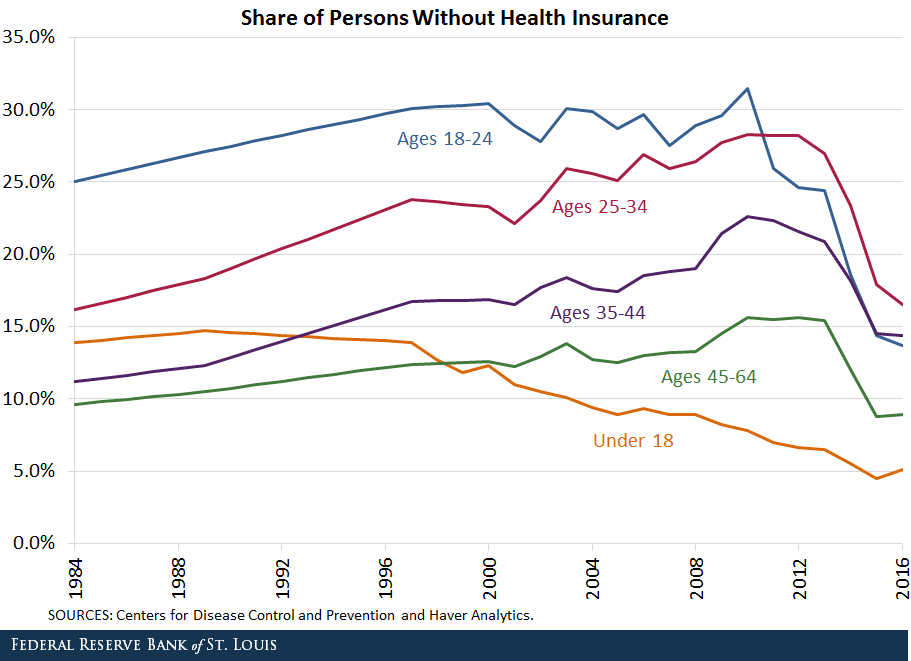from the St Louis Fed
— this post authored by William Emmons, Lead Economist, Center for Household Financial Stability
Household income went up in 2016, and relatively fewer families were in poverty or were without health insurance, according to a Census Bureau report. And senior citizens benefited most of all.

According to the Census Bureau’s annual report on income, poverty and health insurance, inflation-adjusted U.S. median household income increased strongly in 2016 for the second straight year, reaching a new peak of $59,039.1 Also, the share of families in poverty and without health insurance declined.
The report’s findings reinforce long-standing trends toward improved household well-being that skew strongly toward older Americans. Key measures such as health insurance, poverty, wealth and income show that senior citizens are benefiting more than other age groups from improved living standards.
Health Insurance
Nearly all Americans 65 years or older are covered by Medicare, which was created in 1965. Hence, their uninsured rate has approached zero during the past five decades.
Among people under 65, the uninsured rate was between 12 and 18 percent from the early 1970s until the advent of the Affordable Care Act. Last year, it fell to a new low of 10.4 percent.
Within the under-65 population, the uninsured rate is lowest among children because of two government programs:
Older working-age people (ages 45-64) faced the second-lowest uninsured rate at 8.9 percent. Although they have declined recently, the uninsured rates for all three age groups between 18 and 44 remained in double digits, as seen in the figure below.

Poverty
The overall poverty rate declined to 12.7 percent in 2016, slightly below its 13.2 percent average of the past 50 years. Children were more likely than adults to live in poverty, while people 65 years and older had the lowest poverty rate of all age groups.













Leave A Comment